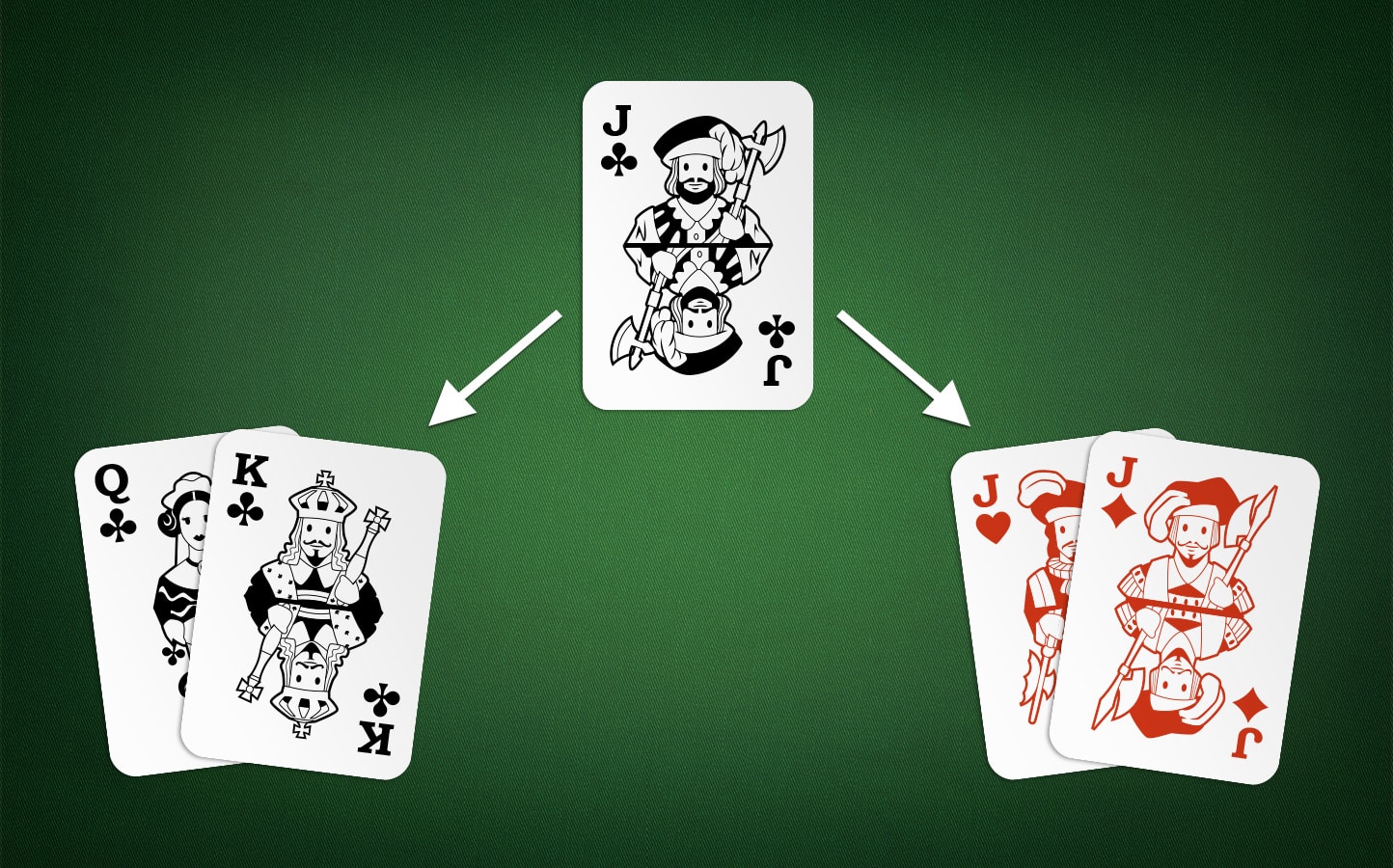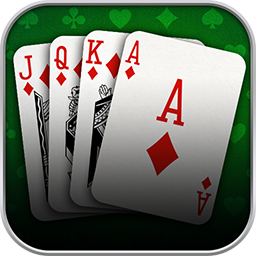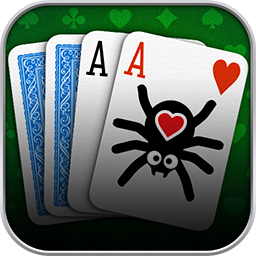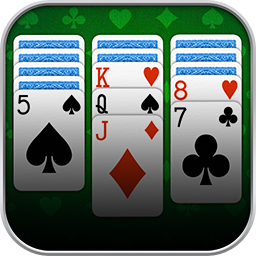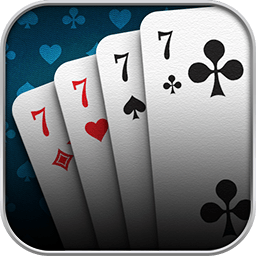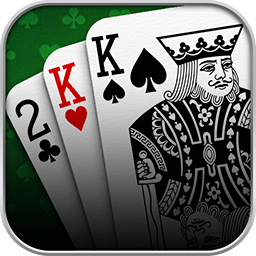What experienced players will catch a glance might not be obvious at all to many newbies. We are talking about potential combinations and melds here. We are taking a closer look at the topic so no meld will escape you, as hidden as it may be.
What Can I Meld?
The fundamental rule is straightforward: Three coherent cards make up one meld.
- Groups (also books or sets) consist of three to four cards of the same rank but different suits.
- Runs (also sequences) consist of three to 13 cards of the same suit in different ascending ranks without a gap.
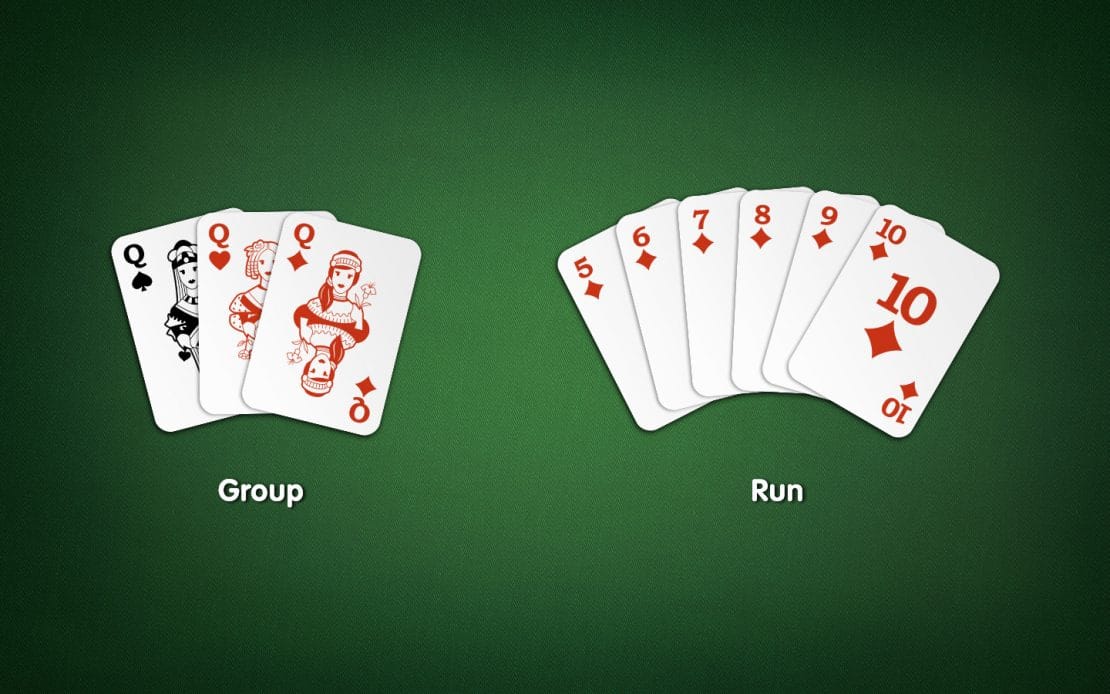
This rule is easy, but its application is complex. To make the best of your hand you need to take both possibilities into account equally and screen all options systematically. It is possible to win a game with runs only, but it is definitely more difficult.
Looking for Combinations
When receiving cards at the beginning of a round at the Rummy Palace, they are sorted by suit in your hand. That helps with identifying runs. Three consecutive cards are a complete run. You should only split them up if that results in better combinations. Two successive cards are a promising start because you can add a card at the upper and lower end. You should keep these cards in mind.
The situation is trickier if you are holding two cards with a gap between them, for example, Ten of Hearts and Queen of Hearts. You require a specific card to close the gap, a Jack of Heart or a Joker in this case. The chances of you drawing that exact card are, sadly, pretty low. The fitting Jack might just come to you, but you should not wager your victory on that base.
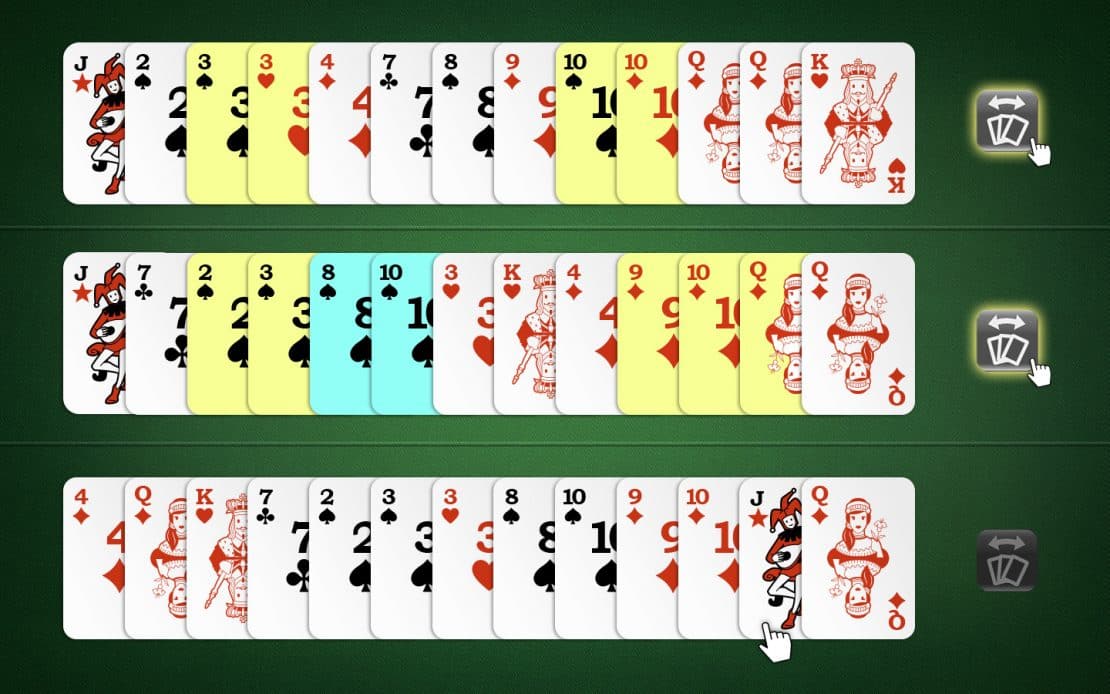
By pressing a button, you can rearrange your entire hand by rank. Then, it is easy to spot complete and almost complete groups at a glance.
Regardless of groups or runs, once two cards match, you have the groundwork of a combination. Most of the time, you will hold soon-to-be groups and runs in your hand. In the next step, it is advisable to sort your hand cards manually. Assort complete combinations next to semi-finished combinations and the outsiders offside. That way, you keep an overview of which cards are helpful to you. But this is also where one of the major obstacles comes in, as it is tempting to pay no further attention to combinations once you arranged them. As a result, other combinations and, eventually, victory might escape you.
Remain Flexible
After taking a thorough look at your start hand, you will quickly get an idea of which combination you want to play. Often, new opportunities emerge in the course of a game, though. Do not hesitate to toss your old plans overboard if a great chance arises.
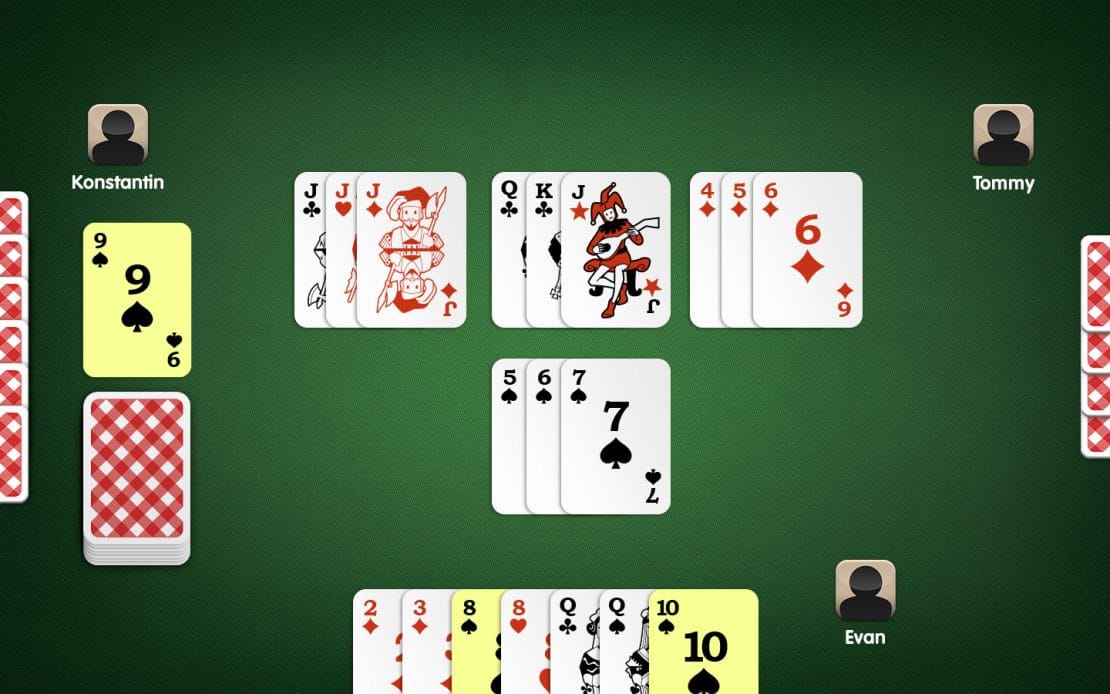
You will often face situations where the same card helps you in two different melds. That might sound taxing at first, as either way, one meld remains incomplete.
In actual fact, that is a blessing. As long as you keep all cards in your hand, all options are available to you. Depending on which cards you gain while playing, you can rearrange the combinations accordingly and then play all cards at once.
Lonely Outcasts
Almost every start hand has cards that do not match any meld. You have no other card of the same rank, and three or more ranks separate the next card of the same suit? Then you have a true outcast, which is only fit for discarding.
Only if you have many of these lonely cards in hand, you have few options other than starting new combinations with some of them.
But it can also easily happen that a card only appears lonely. Just one more card of the same rank turns a disposable card into a potential combination. Even when the second card is already factored into another meld, you should not dismiss this possibility. You never know which cards will be offered to you next. If you can, discard all true outsiders before parting with a card like that.
The Jokers’ Power
Jokers can take the place of any other card. With a single Joker in hand, the number of your options downright explodes. Some are rather obvious when it comes to closing a gap in a run, for example. Others are more hidden. It is worthwhile to systematically browse your handcards and consider the achievable combinations by adding a Joker above, below, or in the same rank as each card.
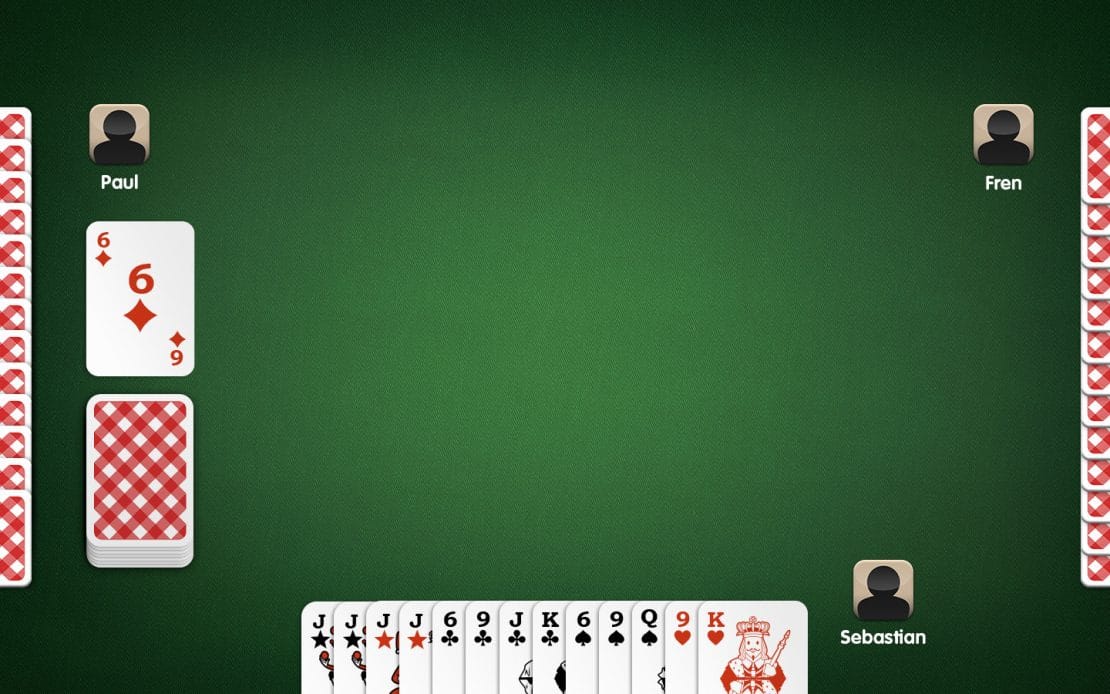
Do you want to practice these essentials right away? Go ahead, and play a couple of training rounds. When you are ready, click here to get to the next lesson.
